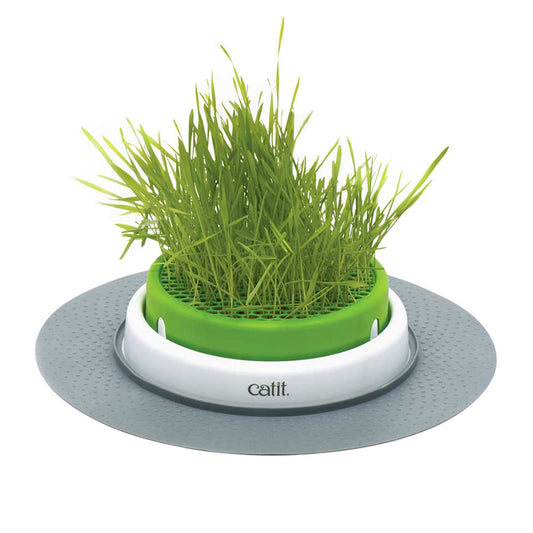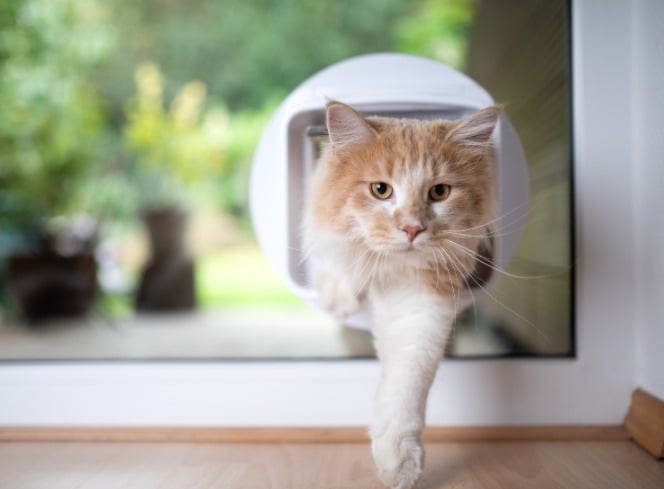Creating a safe outdoor environment for your feline friend is a priority for many cat owners. While cats love to explore, their adventures can sometimes lead them into dangerous situations. Cat proofing your garden ensures that your pet can enjoy the outdoors without the risks associated with free roaming. In this guide, we'll explore effective strategies to create a cat safe garden and answer common questions like how much does it cost to cat proof a garden.
Why Cat Proof Your Garden?

Before diving into the how-to aspects, it's essential to understand the benefits of a cat proof garden:
- Safety: Prevents your cat from encountering traffic, predators, or harmful substances.
- Peace of Mind: Allows you to relax knowing your cat is secure.
- Environmental Protection: Reduces the impact on local wildlife.
Assessing Your Garden
The first step in creating a catproof garden is to assess your current space:
- Perimeter Fencing: Check for gaps or weak spots where a cat could escape.
- Hazardous Plants: Identify and remove plants that are toxic to cats.
- Shelter and Shade: Ensure there are areas where your cat can rest comfortably.
Installing Cat Proof Fencing UK Solutions
One of the most effective ways to secure your garden is by installing specialised cat proof fencing. In the UK, there are several options tailored to prevent cats from climbing or jumping over fences.
Types of Cat Proof Fencing
- Overhang Fences: These have a section that tilts inward, making it difficult for cats to climb over.
- Netting Systems: Durable nets can be installed along the top of existing fences.
- Roller Bars: Tubes that rotate when a cat tries to climb over them.
Installation Tips
- Height Matters: Ensure your fence is at least 6 feet tall.
- Secure Base: Prevent digging by securing the bottom of the fence.
- Professional Help: Consider hiring experts for installation to ensure effectiveness.
How Much Does It Cost to Cat Proof a Garden?

The cost of cat proofing your garden can vary widely based on the size of your garden and the materials used.
- DIY Solutions: Using basic materials, costs can range from £100 to £500.
- Professional Installation: Hiring professionals can cost between £500 and £2,000.
- Maintenance: Factor in ongoing costs for repairs or upgrades.
Investing in quality materials and installation can save money in the long run by reducing the need for frequent repairs.
Additional Measures to Stop Cats Getting Out of the Garden
While fencing is crucial, combining it with other strategies enhances effectiveness in keeping your cat safe.
Use of Plants
Certain plants can deter cats from specific areas:
- Lavender and Rosemary: Cats generally dislike the smell.
- Thorny Bushes: Planting these along the fence line adds an extra barrier.
When creating a cat safe garden, it's crucial to be aware of plants that can be harmful or even lethal to your feline friend. Cats are naturally curious and may chew on plants, so removing or avoiding toxic flora is a vital step in cat proofing your garden.
Common Toxic Plants
Here are some common outdoor plants found in UK gardens that are toxic to cats:
1. Lilies (Lilium species)
- Toxicity: All parts of the lily plant are extremely toxic to cats, including the pollen.
- Symptoms: Kidney failure, vomiting, lethargy.
Note: Even small ingestions can be fatal; it's best to avoid lilies entirely.
2. Daffodils (Narcissus species)
- Toxicity: Bulbs are the most toxic part.
- Symptoms: Vomiting, diarrhoea, abdominal pain, heart arrhythmias.
3. Foxglove (Digitalis purpurea)
- Toxicity: Contains cardiac glycosides affecting heart function.
- Symptoms: Heart failure, vomiting, drooling.
4. Azaleas and Rhododendrons
- Toxicity: All parts are toxic due to grayanotoxins.
- Symptoms: Digestive upset, weakness, cardiac issues.
5. Tulips and Hyacinths
- Toxicity: Bulbs contain lactones.
- Symptoms: Intense gastrointestinal irritation, drooling, depression.
If you think your cat may have ingested a toxic plant always check with your vet on what to do.
Creating an Enriching Environment

Keep your cat engaged within the garden to reduce the desire to escape:
- Climbing Structures: Install cat trees or shelves.
- Interactive Toys: Place toys that stimulate hunting instincts. Shop our range of interactive cat toys here.
- Water Features: Some cats enjoy running water, like small fountains.
Legal Considerations in the UK
In the UK, it's important to ensure that any modifications to your garden comply with local regulations.
- Planning Permissions: Check if you need permission for taller fences.
- Neighbour Agreements: Discuss changes that might affect adjoining properties.
- Wildlife Protection: Ensure that your modifications do not harm local wildlife habitats.
Maintaining a Cat Safe Garden
Regular maintenance ensures that your garden remains a secure environment.
- Routine Inspections: Check for new escape routes or damaged fencing.
- Update Features: Replace worn-out toys or structures.
- Seasonal Adjustments: Prepare for weather changes that might affect the garden's integrity.
Conclusion
Creating a cat proof garden is a worthwhile investment for the safety and happiness of your feline companion. By combining effective cat proof fencing UK solutions with engaging garden features, you can provide a secure outdoor haven.
Remember to consider costs, legal aspects, and maintenance to keep your garden in top condition. With careful planning and execution, your garden can become a paradise that both you and your cat enjoy.
Here at Lords & Labradors, our Pet Experts have spent a lot of time carefully crafting and curating all the best products for your favourite feline to keep them healthy and happy. Shop everything you could need for your cat here.
































































































